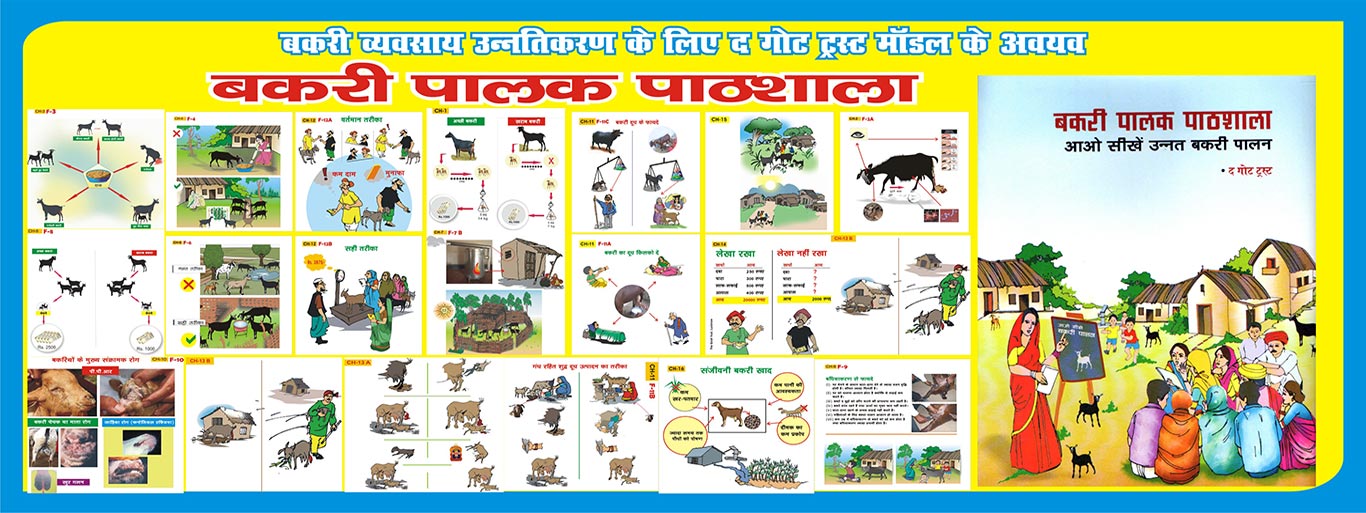


The Shepherding school (Bakari Paalak Paathshaala) concept is led by The Goat Trust, wherein an experiential learning platform is created in each village with a membership of 20 to 30 goat rearing families and it aims to change goat farming practices by identifying key local goat farming problems and facilitate and experiment with a group of farmers.
A detailed manual with key identified problems and flex-based tools and games had been developed by The Goat Trust and professionals are trained to facilitate this process of learning as an informal learning setting system.
Here the major role of the facilitator is to design an experiment and 16 major learning exercises had been designed through tools like flex and games. Goat farming women were facilitated to one major problem they are facing and wanted a solution to. In some cases, the facilitator observes goat farming and identifies key problems, and facilitates sessions.
A presentation through the tool is made to share the problem statement and suggested solutions for the same. Then a discussion on how and why part of it is facilitated. Some volunteers are selected from the group to do an experiment and within the scope of the experiment control group and experimental group are identified.
Now resource for the experiment are handed over under the guidance of trained livestock nurses to carry out the experiment. Depending on the issue identified, a period of an experiment to a maximum of 30 days (depending on seasonality if the season is a variable factor) is carried out. Livestock Nurses record the verifiable parameters and the learning group makes a visit in the next meeting to find out the differences and understand the experiences of farmers who have undertaken experiments.
Based on subjective and objective assessment, a future course of action is decided and a supply chain for input or material supply through a collective business center is established. Let's understand it by an example. If green leaves are getting wasted in a goat farming village, the facilitator makes a presentation through recently taken on the spot pictures, how much leaves are wasted and present it to the group. A discussion on water used for green leaves production and labor involved in carrying such leaves to the goat house is discussed in smaller groups and consolidated in plenary.
Then a solution of hanging green fodder or green fodder stand design is suggested through flex-based picture tools.
Now a control group is selected who will use this stand and will record wastage of green fodder (Livestock Nurse have to take record) for 7 days. Similarly, recording of wastage by non stand owners is prevalent in the village.
In the next school meeting scheduled at monthly interval these data, observation, and experiences of farmer adopting it is shared. A plan is developed who wish to adopt this practice and how low-cost stand based on the presented design principles from local materials can be made. An action plan for field support and field follow-up is shared.
Although we designed learning on this process we found we had high success where the right facilitator and person with the right background of technical knowledge was present and medium to low where processes were compromised.
Many times textbook knowledge like feed supplementation output was challenged especially when leguminous green fodder was plenty or season just after harvesting when fallen grains in the field were taken by goats.
So a general recommendation of feeding grains to goats was found just to increase cost and marginal or low proportionate return on investment.